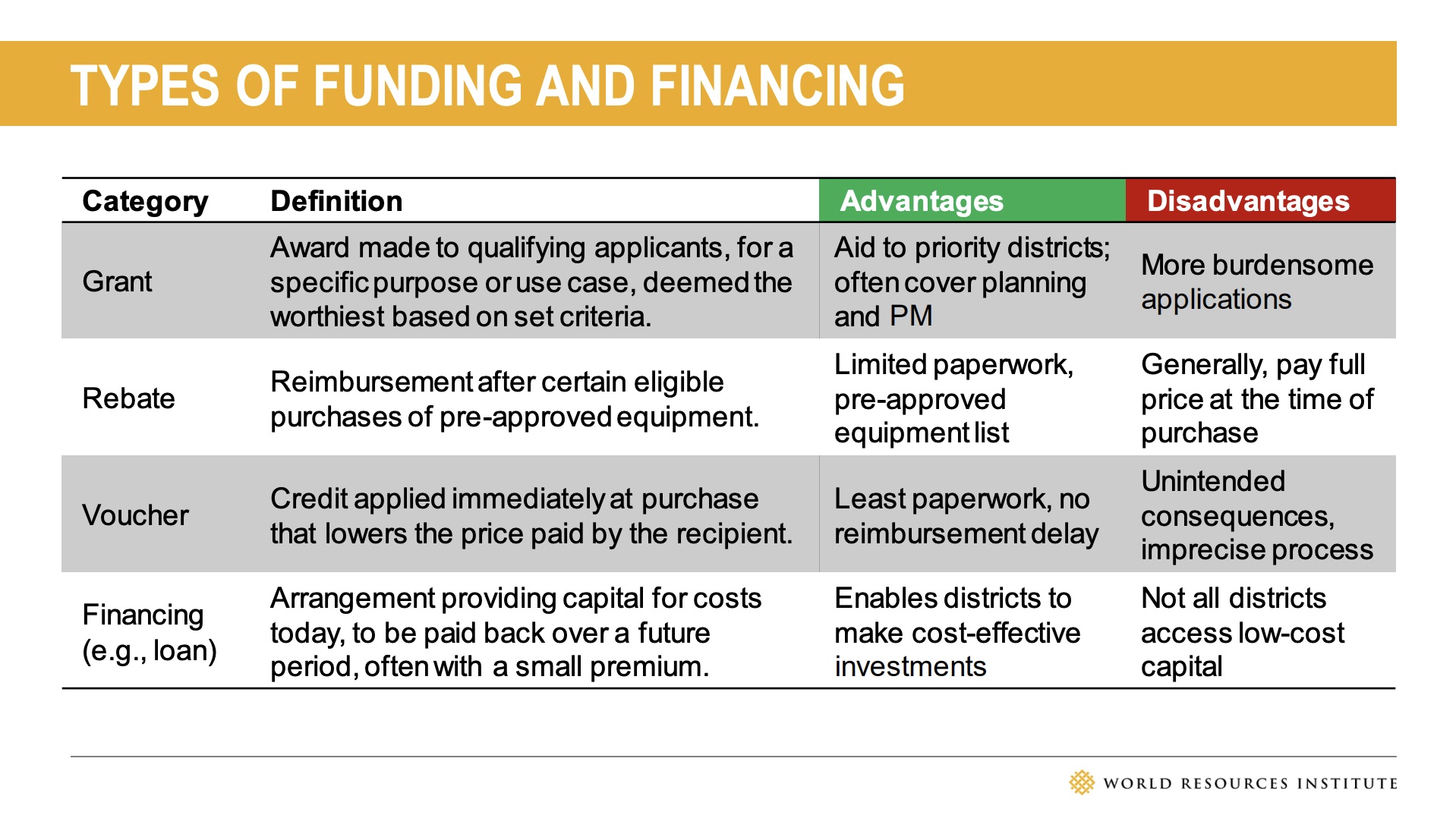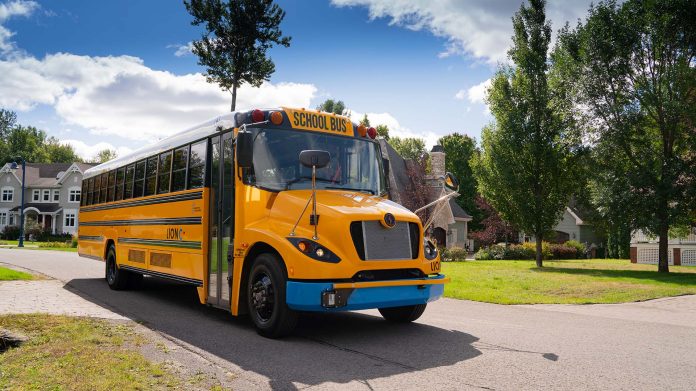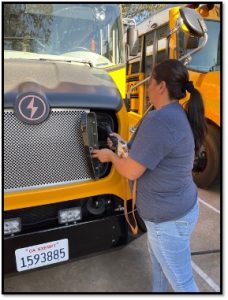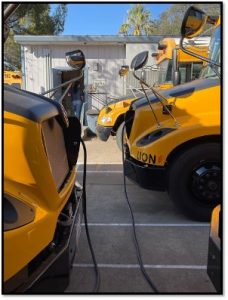A webinar hosted by School Transportation News examined the electrification process at Palermo Unified School District in Northern California as well as funding options for such an endeavor.
The district began electrifying its fleet in 2018. Carlos Aguilar, director of maintenance, operations and transportation, said on Thursday during the webinar that partnerships were key in securing funding and constructing the electric charging infrastructure, some of which was built underground.
Aguilar added that Palermo is happy with its Lion Electric and Blue Bird buses, which are also used on special-needs routes. He added that they have also been proactive in getting mechanics and drivers trained to operate the EVs properly. Its main fleet runs on electricity, and most field trips are local, with the average bus routes being 60 miles. But Aguilar said he is keeping an eye on improving EV technology that could support longer trips.
Images courtesy of Carlos Aguilar, director of maintenance, operations and transportation for Palermo USD.
Meanwhile, AMPLY Power has four main offerings, explained senior sales manager Erik Bakke. To ensure electric buses are ready to go when needed, AMPLY uses its cloud-based OMEGA Charge Management System to control chargers, monitor the buses and send alerts to ensure they are charged in time. It integrates with existing fleet management systems and Vehicle-to-Grid (V2G) charging is also an option.
Palermo uses the AMPLY system. Aguilar added that drivers are also tracked using this system and that data can be pulled to use for training purposes. AMPLY also works with utility companies to optimize operations, charge buses faster and save districts money.
“Since most of our fleet is electric, we need to have those buses ready to go,” said Aguilar, adding that the vehicles must also be ready to go in case of an emergency evacuation.
The notification system in OMEGA allows his team to know if a bus needs charging so the issue can be immediately addressed, rather than arriving at the bus barn in the morning to a drained bus.
For fleets with limitations on installing permanent charging infrastructure, AMPLY offers the portable INRUSH Contained Charging System, a prebuilt, reusable option for districts that may not have immediate resources to build their own charging infrastructure. This would save half the cost and can charge eight to 10 buses at a time.
Additionally, AMPLY’s ELEVATE Hassle-Free Maintenance service guarantees 90 percent uptime on EVs.
Related: Influencing the Growth of the EV School Bus Market
Related: ACT Expo Panelists: It Takes a Village to Electrify
Related: Watch: Michigan School Bus Driver Shares Her Love For Electric
Related: Taking Steps Toward a Cleaner Earth With Greener Bus Fleets
Related: STN EXPO Indianapolis Session to Tackle Implementation of Electric School Buses
AMPLY also offers Charging-as-a-Service which saves districts, like Palermo USD, 50 percent in fueling costs. The energy rate they are paying is 10 cents/kwh compared to the area’s potential unmanaged charging electricity rate of $0.20/kwh. This lower energy rate results in the district effectively paying $1.19/gallon to power its electric buses.
Michelle Levinson, manager of eMobility financial solutions for the electric school bus initiative at the World Resources Institute, highlighted the company’s vision for supporting student education and health through EVs.
She compared different types of funding:

“The districts who are most successful are the ones who think most creatively about their funding sources,” she said.
Levinson noted that the industry is currently seeing unprecedented levels of funding for electric school buses. She reviewed EPA’s Clean School Bus Program which will disburse a record $5 billion to replace older, polluting school buses with cleaner and electric school buses. Multiple states have pending, available or awarded state funds for electric school buses through vouchers, rebates and more. Utilities not only offer financial incentives but also expert partnerships for a better electrification process overall.
While the upfront cost of an EV is more than a diesel bus, the savings come in from the lifetime total cost of ownership, she pointed out. With the rising cost of fuel, Bakke noted that AMPLY’s charging optimization can offer over 75 percent in savings at the pump.
From alternative student transportation to fleet electrification, the business model for school buses is changing and there are many sources of funding and partnership, Levinson summarized.
In places like New York where V2G charging isn’t as supported, V1G charging allows users to reduce charging during peak hours and save money that way, Bakke said. Levinson added that working with a local utility is advantageous in these locations.
















